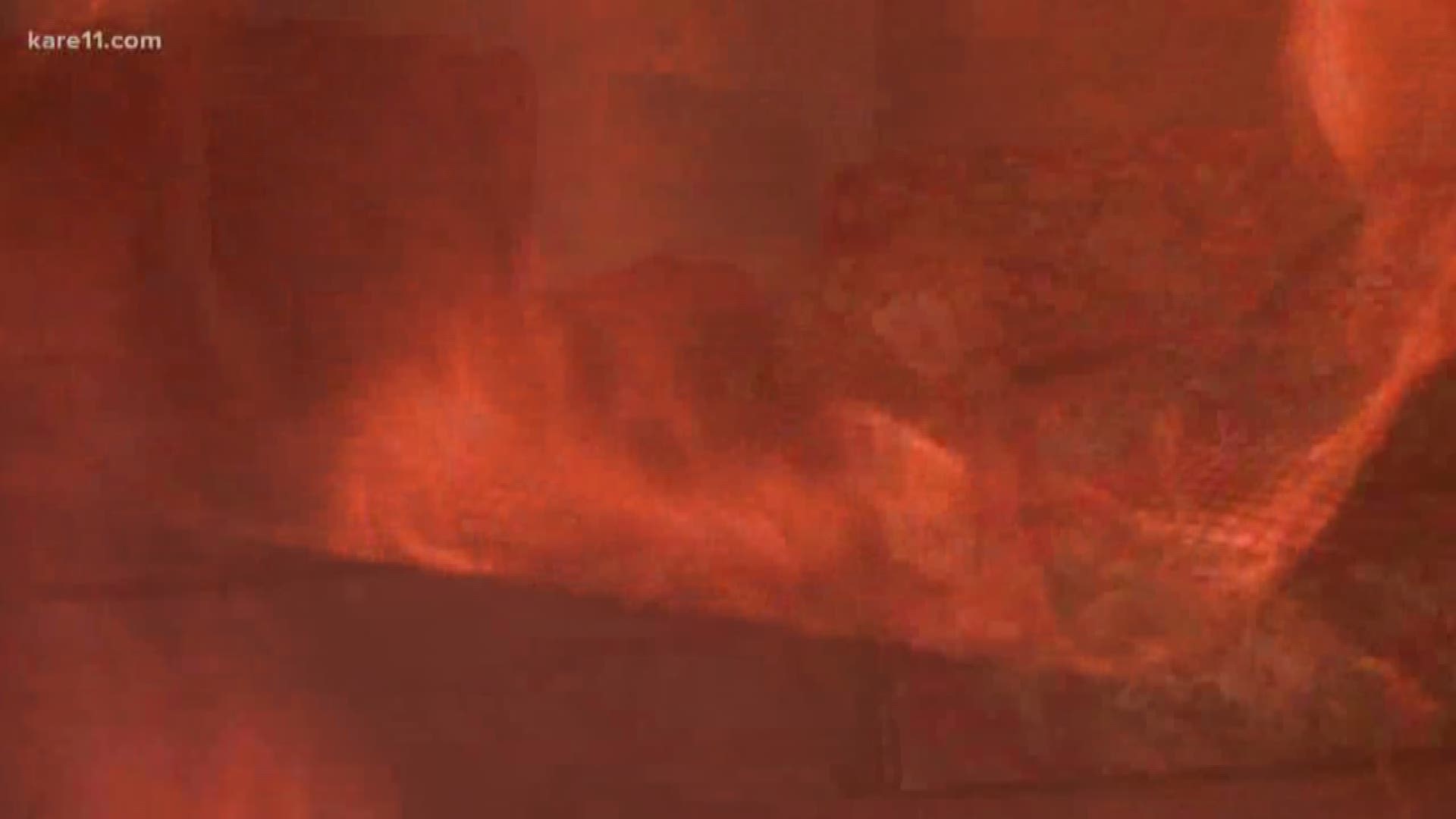Check out Part 2 of this story, on one simple thing that could save your life, here.
Here’s something that might come as a surprise … fire has changed. At least home fires have changed. Things burn much more quickly than they used to and that means you have much less time to get out safely. Why is that? And what can you do to help keep your family safe?
It all started with the Eden Prairie Fire Department. They were planning a burn and we got on board. Someone donated the buildings and Golden Valley and Minnetonka fire departments jumped in to build them into two mini houses that we would ultimately burn. It would be a training for them, a demonstration for us.
“Literally, we’re recreating what a normal house would be, just on a smaller scale,” says Eden Prairie Asst. Chief Becki White who was heading up the project.
On one side, the plan is to demonstrate how much faster fire burns now, on the other, to demonstrate one simple step that could save your life.
"I came into the fire service in 1986 and the difference in how fires look when we show up is dramatic," says Eden Prairie Chief George Esbensen.
What’s also different? The time you have to get out. It used to be about 17 minutes after a fire started, now you have less than four minutes to escape. Chief Esbensen says it's not the fire that's changed, it's what's burning.
“It used to be wool, and leather, and cotton, and those sorts of things, and now it's all polyester, and artificial fabrics, which are essentially petroleum turned into fabric, so they burn like cars, they burn like gasoline,” he says.
“Then you combine that with modern lightweight construction that houses are built with now and so the fires are growing faster and hotter and they get to their ignition point a lot quicker,” he explains.
To illustrate the point we set up two rooms each with a couch, a chair, a table and curtains. One with newer furniture and one with older furniture.
Chief White explains what we have on each side. The modern side first. “The furniture is about the 80s when it started turning and using more synthetic fibers and foams and things like that,” she says.
“The older legacy furniture we call it. It's mostly wood, cotton, wool, natural fibers that don't burn as quickly as current fibers do.”
And then, we lit them on fire. It doesn’t take long.
Less than three minutes in and thick black smoke starts to pour out of the side with the newer furniture and the flames are strong. The other side hasn't changed much. The fire is still contained to the corner of the couch.
Less than seven minutes in and fire on the newer side spreads to the ceiling, the carpet melts, and the whole room is fully engulfed. Firefighters open their hoses and put out the flames.
The side with the legacy furniture continues to burn for three more minutes until a firefighter goes in with a pump can and douses the flames. The difference is staggering.
“The whole room flashed. We had fire from floor to ceiling fairly quickly,” Chief White says.
“There's zero chance anyone would have survived here?” We ask. “No surviving here,” she says.
But on the other side, the legacy furniture side, there’s hardly any damage. “So, in this instance you not only would have survived, but you probably could have put it out yourself?” asks Rena.
“And you would have time to react,” Chief White says.
That’s all great information, but none of us is going to run out to an antique store tomorrow and get all new furniture. So, what can we do to stay safe?
It’s actually one thing that you might not have thought of, but it’s so simple, and it could save your life.

